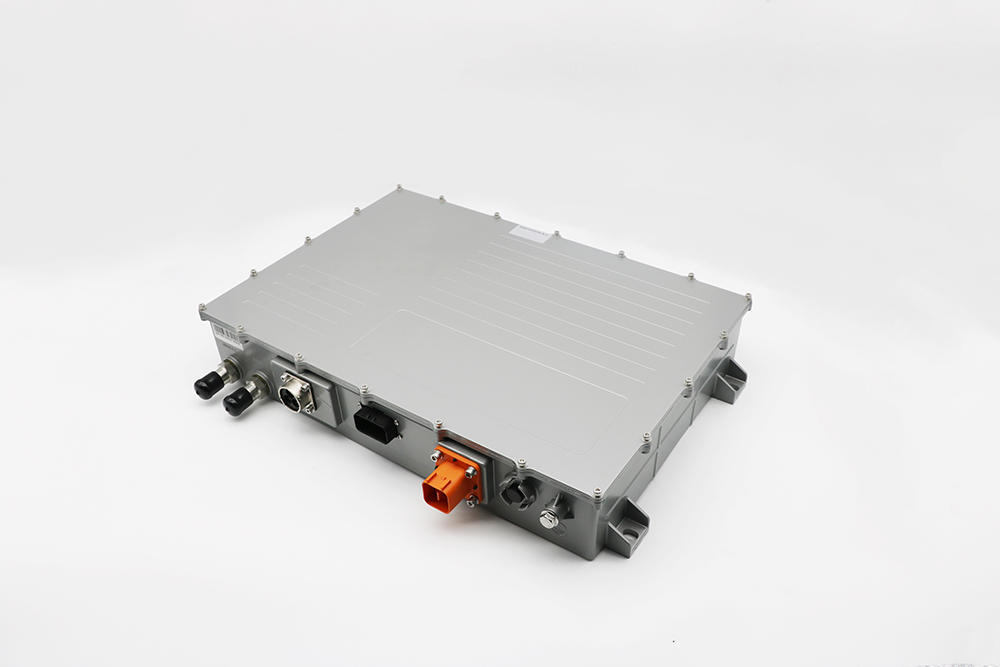
On board chargers (OBCs) are more than just another part in an electric vehicle (EV)—they are a sophisticated piece of technology that plays a vital role in the performance and efficiency of EVs. From converting power to managing heat, OBCs are engineered to make sure your vehicle charges safely, quickly, and reliably. In this article, we’ll explore the inner workings of OBCs, looking at how they operate, why thermal management matters, and what sets single-phase and three-phase chargers apart. By the end, you’ll see why advanced OBC technology is so important for getting the most out of an EV.
At the heart of every OBC is its ability to take alternating current (AC) from the grid and turn it into direct current (DC) that can be stored in the vehicle’s battery. Here’s the step-by-step process:
- AC Input: The OBC receives AC power from a charging station or a standard wall outlet.
- Rectification: A rectifier converts the AC power into DC, smoothing out the alternating waveform to create a steady current.
- Power Factor Correction (PFC): To boost efficiency and limit energy loss, PFC circuits adjust the voltage and current waveforms so they work in harmony.
- DC Output: The converted DC power is delivered to the battery at the necessary voltage and current levels.
This conversion process is essential for making sure the battery gets the correct type of power for safe and effective charging.
Thermal management is a key part of OBC design. Too much heat can lower efficiency, harm components, and even create safety hazards. Here’s how OBCs handle heat:
- Heat Generation: Electrical resistance causes components like transistors and diodes to produce heat during the AC-to-DC conversion.
- Cooling Systems: OBCs use cooling mechanisms such as heat sinks, fans, or liquid cooling to draw heat away and maintain ideal operating temperatures.
- Temperature Monitoring: Advanced OBCs come with sensors and control systems that track temperature in real time, making adjustments to prevent overheating.
Good thermal management doesn’t just help the OBC last longer—it also keeps performance steady and ensures safety.
OBCs can be grouped into single-phase and three-phase chargers, each with its own strengths and uses:
- Single-Phase Chargers:
- Typically found in homes and light commercial environments.
- Run on a single AC phase, which makes them simpler and more affordable.
- Best suited for lower-power needs, such as passenger EVs.
- Three-Phase Chargers:
- Built for high-power uses, like electric buses and commercial vehicles.
- Use three AC phases, allowing faster charging and better efficiency.
- Often used in industrial or fleet applications where quick charging is a must.
Selecting the right charger type depends on your vehicle’s requirements and the charging setup you have in place.
On board chargers are a marvel of modern engineering. By integrating advanced power conversion, smart thermal management, and thoughtful design, they provide EVs with reliable and efficient charging. Whether you drive an electric car or manage a fleet of electric buses, knowing how OBCs work can help you choose the right charging solutions for your needs.
Next:Sunwoda Unveils Consumer Semi-Solid-State Battery Series, Achieves Mass Production
Previous:CALB Leads the Green Bus Revolution with Breakthrough Technology at Busworld Europe 2025
Contact Person: Miss. Kiki
| WhatsApp : | +8617763224709 |
|---|---|
| Skype : | +8617763224709 |
| WeChat : | +8617763224709 |
| Email : | kiki@lifepo4-battery.com |